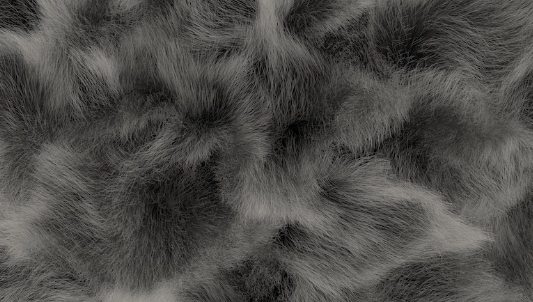Revolutionizing Textile Industry: The Unveiling of Digital Printing on Fabrics

Digital printing on fabrics has emerged as a revolutionary technology, transforming the landscape of the textile industry. This cutting-edge process allows for unprecedented creativity, customization, and efficiency in textile design and production. In this comprehensive exploration, we delve into the intricate details of digital printing on fabrics, unraveling its techniques, applications, advantages, and the profound impact it has had on the global textile market.
Understanding Digital Printing on Fabrics
1. Inkjet Technology: The Heart of Digital Printing
Digital printing on fabrics relies on advanced inkjet technology, where droplets of ink are precisely deposited onto the fabric’s surface. This technique ensures high precision and resolution, bringing designs to life with unparalleled clarity and vibrancy.
2. Types of Fabrics Compatible with Digital Printing
The versatility of digital printing extends to various fabric types, including cotton, silk, polyester, and blends. This adaptability allows designers and manufacturers to explore a wide range of materials, expanding the possibilities for innovative textile creations.
The Digital Printing Process Unveiled
3. Pre-treatment: A Crucial First Step
Before the digital printing journey begins, fabrics undergo pre-treatment. This step ensures optimal ink absorption and color retention, setting the stage for flawless and long-lasting prints.
4. Color Management: Achieving Precision and Consistency
Digital printing’s prowess lies in its ability to reproduce intricate color schemes accurately. Through advanced color management systems, designers can achieve consistency across different batches, meeting the highest standards of quality.
5. Printing: Where Art Meets Technology
The actual printing process involves the transfer of digital designs onto fabrics. With a myriad of color options and design possibilities, this stage allows for customization on a scale previously unimaginable.
6. Post-Processing: Sealing the Brilliance
To ensure the longevity of prints, post-processing steps include fixing the ink to the fabric and treating it for enhanced durability, wash resistance, and colorfastness. This guarantees that the end product meets the highest quality standards.
Applications Across Industries
7. Fashion Industry: Redefining Couture
Digital printing has revolutionized the fashion landscape, enabling designers to translate their creative visions onto fabrics with unprecedented precision. Customization, intricate detailing, and rapid production cycles have become the new norms, reshaping how the fashion industry operates.
8. Home Furnishings: Personalized Living Spaces
In the realm of home furnishings, digital printing offers a unique opportunity for personalized decor. From bespoke curtains to custom-printed upholstery, homeowners can now infuse their living spaces with individuality and style.
9. Sports and Activewear: Performance Meets Aesthetics
Sports and activewear manufacturers leverage digital printing to combine performance-enhancing features with visually striking designs. The breathable and moisture-wicking properties of fabrics can be complemented by intricate graphics, providing athletes with both functionality and style.
10. Advertising and Branding: Dynamic Marketing Solutions
Digital printing on fabrics has become a game-changer in the advertising and branding sector. From eye-catching banners to personalized promotional materials, businesses can now create dynamic and visually appealing marketing collateral that stands out in a crowded market.
Advantages Redefining the Textile Paradigm
11. Unlimited Design Possibilities: Breaking Creative Barriers
Digital printing liberates designers from the constraints of traditional methods, allowing for intricate and complex designs without compromising on detail. The only limit is the designer’s imagination.
12. Short-Run Capabilities: Efficiency and Sustainability
Unlike traditional printing methods, digital printing excels in short-run production, minimizing waste and reducing the environmental impact. This makes it a sustainable choice for textile manufacturers striving for eco-friendly practices.
13. Cost-Effective Prototyping: Reducing Time-to-Market
The ability to produce small quantities at a reasonable cost facilitates rapid prototyping and product testing. This accelerates the product development cycle, providing a competitive edge in the fast-paced world of fashion and textiles.
Digital Printing Challenges and Innovations
14. Color Matching Challenges: Navigating the Spectrum
While digital printing offers exceptional color fidelity, challenges in achieving precise color matching persist. Ongoing innovations in color management software and hardware aim to address these challenges, ensuring consistent results.
15. Durability Concerns: Striving for Longevity
Ensuring that digitally printed fabrics withstand the test of time remains a priority. Ongoing research focuses on enhancing the durability of prints, especially in applications prone to frequent washing and wear.
16. Environmental Impact: Balancing Innovation and Sustainability
As the textile industry embraces digital printing, the environmental impact of ink formulations and fabric treatments comes under scrutiny. Innovations in eco-friendly inks and sustainable practices are imperative to strike a balance between technological advancement and environmental responsibility.
The Future Landscape: Trends and Innovations
17. Augmented Reality Integration: Virtual Try-Ons and Design Visualization
The integration of augmented reality (AR) in digital printing opens new avenues for consumers to visualize designs on fabrics before making a purchase. This trend not only enhances the online shopping experience but also reduces the likelihood of returns.
18. Smart Textiles: Merging Technology with Fabric
The future of digital printing on fabrics extends beyond aesthetics. Innovations in smart textiles involve embedding sensors, LEDs, and other technologies directly into fabric, creating interactive and functional garments with endless possibilities.
19. AI-Driven Design: Enhancing Creativity and Efficiency
Artificial intelligence (AI) is increasingly playing a role in textile design. From generating intricate patterns to optimizing color schemes, AI-driven design tools are poised to revolutionize the creative process in digital printing.
Conclusion
Digital printing on fabrics stands at the forefront of innovation in the textile industry. Its transformative impact on design, production efficiency, and sustainability cannot be overstated. As technology continues to evolve, pushing the boundaries of what is possible, the journey of digital printing on fabrics unfolds with promises of greater creativity, efficiency, and a sustainable future for the global textile market.




